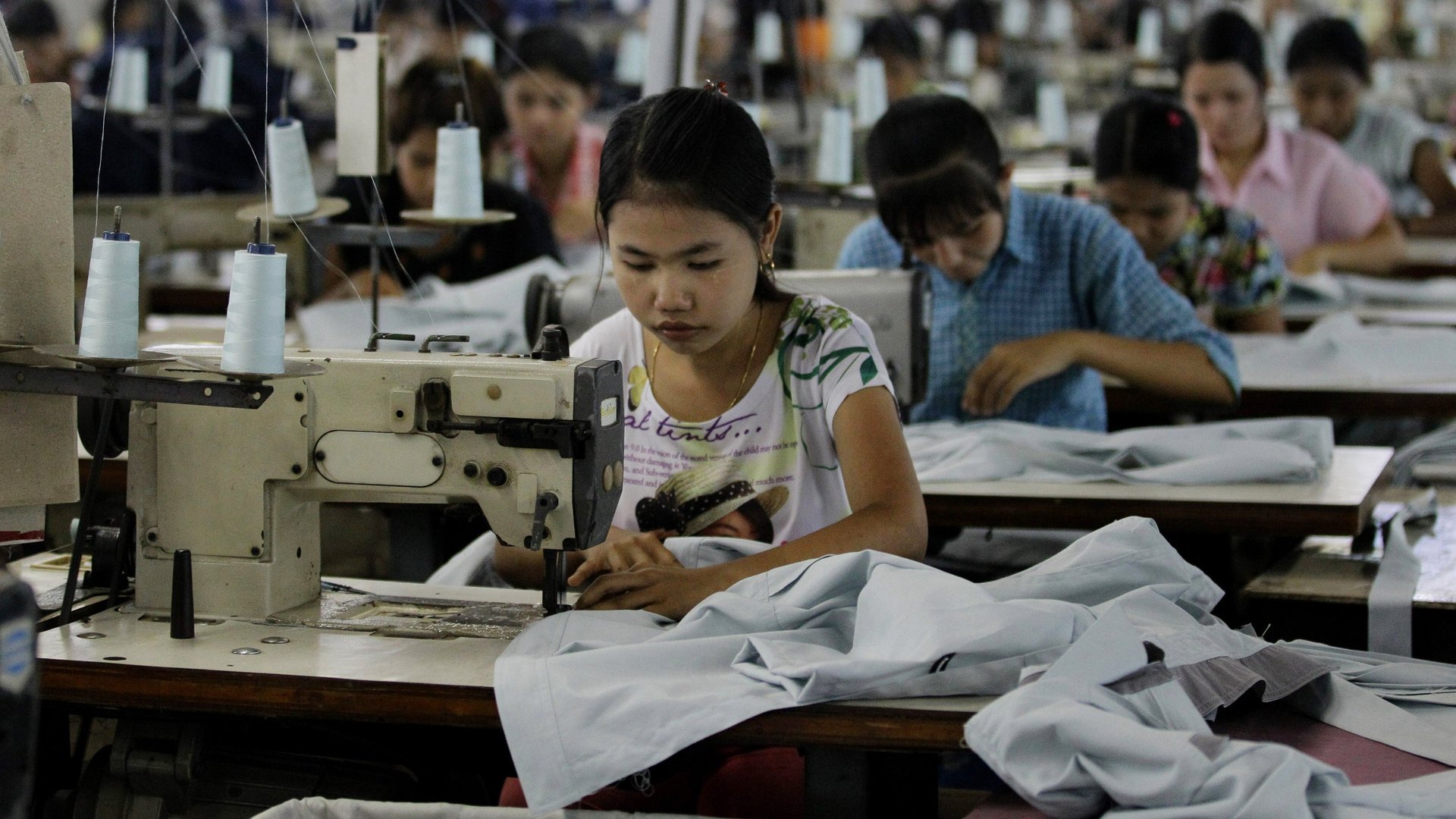H&M reportedly used garment factories that worked teens for 12-hour shifts
H&M is under fire for contracting with factories that allegedly violated child-labor laws.


H&M is under fire for contracting with factories that allegedly violated child-labor laws.
According to the Guardian, a book being published in Sweden next week describes how two factories in Myanmar had workers as young as 14 laboring more than 12 hours a day making clothes. H&M was one of their clients. In developing countries such as Myanmar, the international conventions on child labor developed by the International Labour Organization do allow children to begin work at 14, but that length of workday violates both the conventions and Myanmar’s own laws.
“Indeed, ‘working at age 14’ does not as such necessarily fall within the ILO definition of child labour because ILO Convention 138 allows developing countries to set the minimum working age initially at 14 years,” an ILO spokesperson wrote in an email. “However, it would be another thing if children work long hours (especially overtime) or night shifts. Such work by under 18 year old youth is hazardous work, therefore a worst form of child labour as defined by ILO Convention 182.”
The spokesperson also noted that Myanmar has not ratified Convention 138. It is one of a handful of countries worldwide that has not, including Bangladesh, India, and the US.
Moa Kärnstrand and Tobias Andersson Akerblom, the authors of the book, which is called Modeslavar, or Fashion Slaves, spoke with girls who worked all day until 10pm at the two factories: Myanmar Century Liaoyuan Knitted Wear and Myanmar Garment Wedge. One girl who started working at a factory when she was 14 said they would hire anyone who wanted to work.
H&M said it has demanded an action plan, including “improved recruitment routines” for handling ID cards, from the factories, where these conditions have reportedly existed since 2013. “It is unacceptable to H&M that there are teenagers with working hours that directly violate the rules,” the company said in a statement. “Any overtime must be in accordance with legislation as well as our own demands.”
It also stressed that simply having 14-year-olds working in the factories did not qualify as illegal child labor. ”ILO instead stresses the importance of not excluding this age group from work in Myanmar,” it said. “H&M does of course not tolerate child labour in any form.”
H&M has said previously that it conducted a “thorough risk analysis” before entering Myanmar, where political reforms since 2011 have opened up the country’s garment industry to international brands. But the industry has drawn scrutiny for widespread problems. A report (pdf) last year by Oxfam and labor-rights groups in Myanmar said that garment workers “are working up to 11 hours a day, six days a week, but remain trapped in poverty.” About 90% of the roughly 300,000 workers in the industry are young women, the report said. In addition to H&M, it pointed to Primark, Gap, and Adidas as also sourcing from the country.
H&M, which is one of the biggest fashion companies in the world and whose chairman is the richest person in Sweden, sources a great deal of its clothing from low-wage countries. Though many of its contract factories have been called out for worker abuses in recent years, it often points out that it is working to improve conditions in the factories making its clothing. It is also part of the Ethical Trading Initiative (ETI), an alliance of brands with the stated mission of improving conditions for workers.
“ETI recognizes that in complex supply chains, issues will inevitably arise,” Peter McAllister, ETI’s executive director, said in a statement. “What’s important is a meaningful and timely response.” The question is whether H&M’s action plan will meet that mark.
This story was updated with comments from H&M.